#American fantasy martial arts action film
Photo

ℑ 𝔞𝔪 𝔊𝔬𝔯𝔬! 𝔊𝔢𝔫𝔢𝔯𝔞𝔩 𝔬𝔣 𝔱𝔥𝔢 𝔞𝔯𝔪𝔦𝔢𝔰 𝔬𝔣 𝔒𝔲𝔱𝔴𝔬𝔯𝔩𝔡 𝔞𝔫𝔡 𝔓𝔯𝔦𝔫𝔠𝔢 𝔬𝔣 𝔱𝔥𝔢 𝔰𝔲𝔟𝔱𝔢𝔯𝔯𝔞𝔫𝔢𝔞𝔫 𝔯𝔢𝔞𝔩𝔪 𝔬𝔣 𝔖𝔥𝔬𝔨𝔞𝔫
𝔐𝔬𝔯𝔱𝔞𝔩 𝔎𝔬𝔪𝔟𝔞𝔱 (յգգՏ) 𝔡𝔦𝔯𝔢𝔠𝔱𝔢𝔡 𝔟𝔶 𝔓𝔞𝔲𝔩 𝔚. 𝔖. 𝔄𝔫𝔡𝔢𝔯𝔰𝔬𝔫
#Mortal Kombat#90's#90s#goro#1995#martial arts movies#American fantasy martial arts action film#fantasy martial arts action film#martial arts action film#fictional character#antagonist#movies#90's movies#90s movie#Kevin Michael Richardson#Prince of the subterranean#shokan#half-human half-dragon#Outworld#Mortal Kombat tournament
183 notes
·
View notes
Text
IAN OUSLEY | YOU WANT FRESH KICKS, HUH? PUT THESE FRESH KICKS IN YOUR PIPE AND SMOKE IT

Ian Ousley is an American actor hailing from College Station, Texas. This year he reprised the role of Sokka in the much anticipated live-action adaptation of the Netflix fantasy series Avatar: The Last Airbender. Here we sit down with the actor to discuss his latest project, his process and his style influences.
youtube
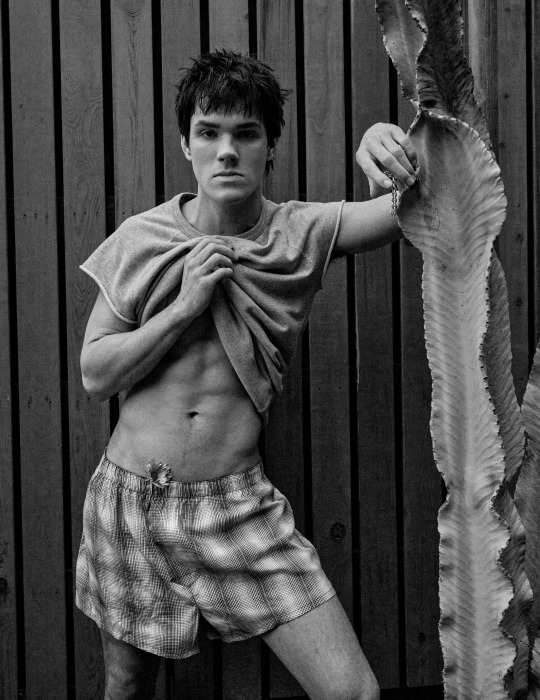
When you start a creative project like Avatar does it consume you or do you strike a balance? Does your acting and your personal life feel separate or very much attached?
Doing a creative project is a very intimate thing for me. I feel like the relationship between my life and these creative endeavors is that they just end up merging together. When I’m filming a project, it becomes my life. It might just be because I haven’t learned how to do both at the same time but my biggest concern when I sign onto something, especially something like Avatar that means so much to so many people, is to give my everything to the work that I can. It took about 13 months in Canada to film Avatar, and it really became my life.
The people that started out as co-workers like my co-stars Dallas, Kiawentiio, and Gordon have become like siblings to me. I had the opportunity for the last year and a half to live some life away from the project while we were waiting for the release and that felt very separate from the show but I didn’t feel separated from the people I met on set. We all still stayed in touch, especially me and Dallas because he lives in LA as well.
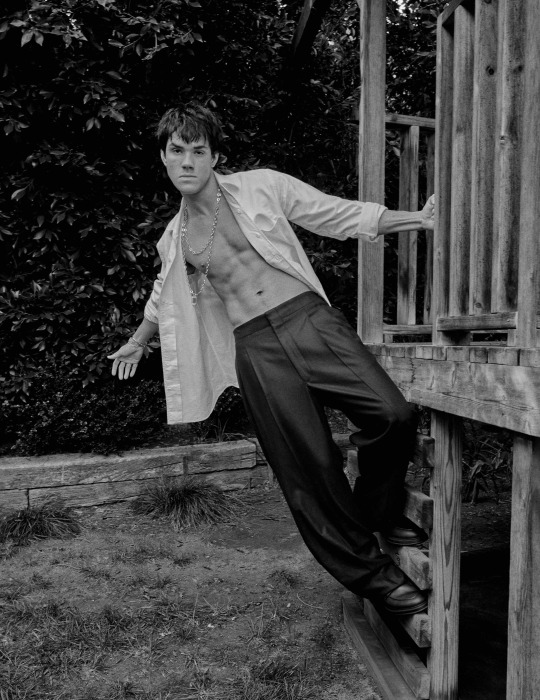
How are you approaching taking on a role in a series that has such a passionate fan base? How is this fan base influencing your work and preparation? Is there a new or familiar angle from the cartoon series of Avatar you want to bring to the role?
I was a part of that passionate fanbase before I was cast and that definitely influenced my prep. I rewatched the first season of the original show and tried to embody the soul of who Sokka is but I did a lot of journaling and asked myself a lot of questions about how to show the humanness of Sokka and match the tone of the show we were making while honoring the original animated series. It was fun to dive into the vulnerability of Sokka while maintaining the comedic elements of who he is. It’s rare to find that balance with a character so it was really exciting for me to get to wrestle with.
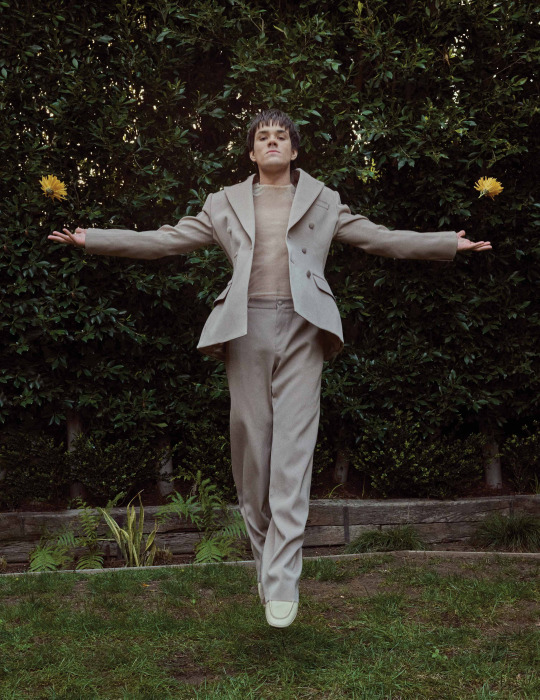
What is unique about your acting process for this particular role in Avatar? How did you prepare for the physical aspect of the role?
Well this was my first time preparing for a role that came with pre-existing IP, which is a blessing and a curse. It’s a blessing because you have so much to pull from with the show and knowing what the character’s arc is going to be and the comics and getting to really dive into the world that you will be bringing to life. The curse is that everyone who is familiar with the IP has a visual representation of the character in their head and loves it, so the balance really becomes how do I stay truthful to who this character is while getting to add the components of what isn’t there already, which is him being a real human going through real human emotions. The way I prepared physically was really just unlearning some of my martial arts techniques that I have and acting like I’m untrained.

What do you want people to take away from the series?
I want our show to inspire people to embrace family whether that be blood-related or chosen family like the Aang gang.

What emotions are most tied to creativity in your acting process in this show? Which emotions trigger ideas and inspiration and which do not?
For me, intellectualizing emotions while acting doesn’t always mix very well. For Sokka, who is 16 and has a lot riding on his shoulders, I don’t think he always knows why he’s feeling what he’s feeling. He often pushes down his true emotions or covers them up to protect his sister and his tribe. So, I think that is where I pulled my inspiration for a lot of my creative choices for him.
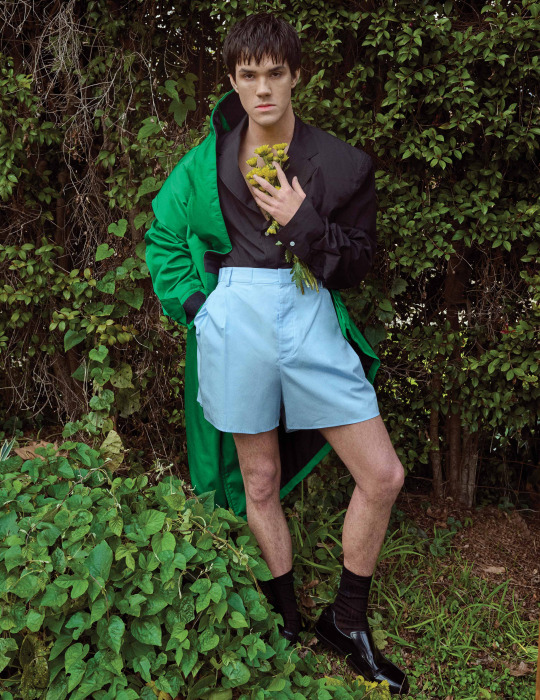
Which of the four elemental powers are you really and why?
I think that I would be a water bender because it correlates the closest to being an artist in my opinion. Being a creative in general is often becoming formless and shapeless in the words of Bruce Lee.
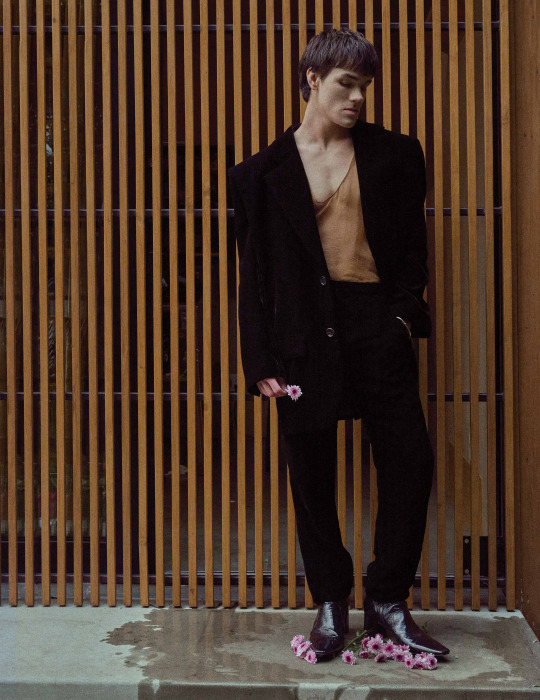
How does fashion influence your life and how does life influence your fashion? Do the two work in conjunction? How has your style changed as your career has progressed? Do you have a staple piece that feels most personal?
Fashion is awesome because people infer a lot about you just from what you’re wearing on the daily. So, my life definitely influences my fashion because I’m often dressing based on what I’m feeling when I wake up that morning. My style has changed drastically in the last 2 years and I’ve gravitated towards a lot of black and white clothing and experimenting with layers.
My style has also evolved into a lot of highs and lows. I love zip-up hoodies and dress shirts and really exaggerated silhouettes right now. The most personal part of my wardrobe is my jewelry and most of the time I have on a cross necklace from Tiffany and Co. that my great aunt gave me, which has been a staple for me since I was 16.
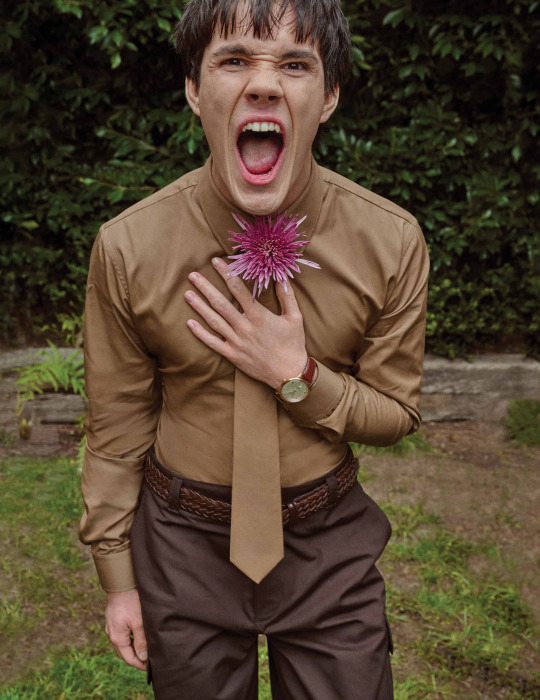
#natla#atla#ian ousley#netflix avatar#netflix atla#avatar the last airbender#avatar netflix#atla netflix#photoshoot#interview#flaunt magazine#Youtube
10 notes
·
View notes
Text
Power Rangers almost came out in the US a decade early, in 1986
Haim Saban, a former Vangelis-esque electronic musician, had a big idea when in his hotel room in Japan 1985: why not bring over a Japanese live action sentai show, but film footage around it with local actors? The initial series was Bioman, and he even created a pilot and proof of concept for it, which to date, has not been seen except in small snippets anywhere in the world. If his American Bioman pilot was picked up, it would have aired in 1986, alongside GI Joe, Jem, and Masters of the Universe. Who knows if it would have become a phenomenon the way it ultimately did, or it would have been lost in the shuffle of kids entertainment in the mid-80s?
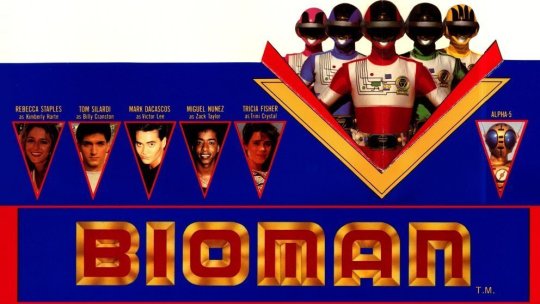

In one crucial respect, the 1986 Bioman pilot had a huge advantage: the cast was led by legit action star and martial artist Marc Dacascos, who is legendary in the action and kung fu world. If you like action movies, you probably recognize him on sight. He would have brought the show a tremendous amount of martial arts credibility.
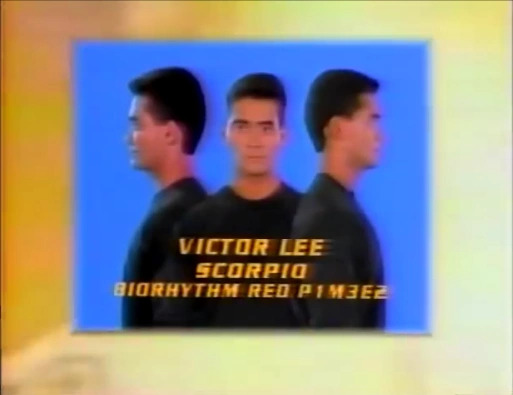

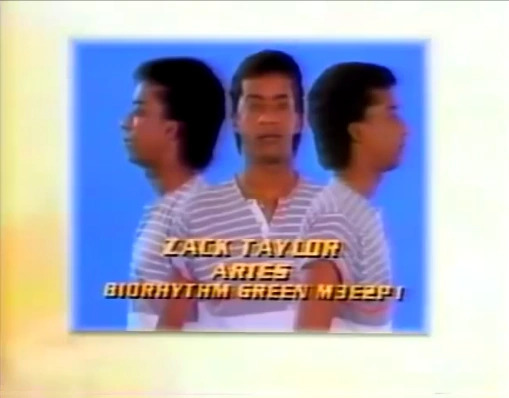
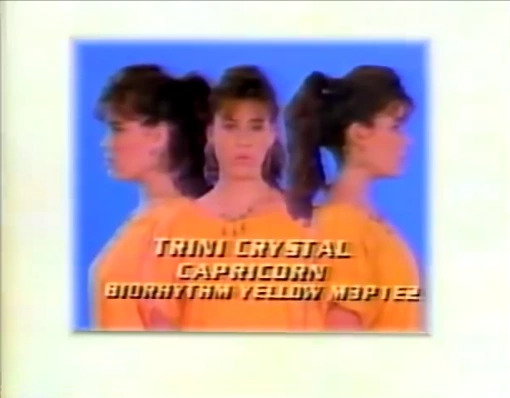
Some aspects of Bioman survive in the final series in 1993. For example, in Bioman, the heroes have a C-3P0 esque comedy robot servant, which was a big part of the Bioman concept, but was not at all in the series they ultimately picked to cut up, Zyuranger (which was fairytales and fantasy). In other words, the Power Rangers have a funny robot because that’s what Bioman had. Also, it is believed that some footage from the ‘86 Bioman pilot was used at various points in the 1993 Power Rangers, which considering what a legendary skinflint Saban was, is perfectly in character.
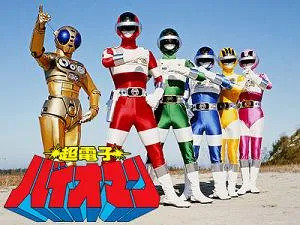
Incidentally, in much the same way that Vince MacMahon’s skills as a play-by-play man are seldom mentioned for obvious reasons, it’s worth pointing out that Haim Saban, whatever one might think of his management style or tactics in the business world, is a tremendously talented musician and composer. Just look at the music he composed for Mysterious Cities of Gold: it was a Vangelis or Moroder-level accomplishment, on much the same level that Christian Bruhn’s score for the German Captain Future series outshines the original version.
397 notes
·
View notes
Text
was tagged by @patronsaintofdesire to answer these questions and tag nine people you want to get to know better! thank you, malina :]
last song: as of writing this, marie doucer, marie colère by manon hollander from the john wick 4 soundtrack. it's essentially a french version of paint it black by the rolling stones & it's a banger
favourite colour: i always say yellow (like a gold yellow, #ffc000), but by that i usually mean the combination of black & yellow. i'm also pretty fond of the greyish-blue i use on my blog (#7b9e9a)
last film/tv show: the last thing i watched in full was point break (ty andrew @busaikuknee for initially convincing me to watch it, "keanu reeves has to learn how to surf to solve robberies" is a truly baffling concept & no one will ever do it again). i say "in full" bc also been revisiting a lot of clips from ip man 1-4 so in my head it feels like i've rewatched those too
sweet/spicy/savoury: savoury. i don't have sweet things very often, and while i can tolerate fairly spicy food i just don't enjoy it that much (i'm a massive disappointment to my family)
relationship status: philosophically speaking, aren’t we all single?
last thing i googled: cozmo and vector robots! i saw a video somewhere of these guys and got so excited. they're these rly cute little WALL-E -esque robot friends made by an american robotics/ai startup called Anki, who specialised in robotics technology for children. i looked online to see if they were still around, but they've been discontinued since the company went bankrupt in April 2019 <\3
also related, there's this article from 2019 i read called Discovery of the Uncanny Valley that briefly mentions the Vector robots, but also discusses other examples of technology made in the past that have these human-like attributes given to them. it's a light read & there are some links to other similar articles at the end if you're into that stuff :]
current obsession: well, wrestling is always a given. i've fallen out with njpw for months now, but i've been watching more pro wrestling noah instead & i'm loving it tbh
apart from that, i've been watching a lot of Donnie Yen films bc i'm a little bit a lot in love with the old man (60 y/o btw & looks like that, fucking wild man). and by proxy i've been learning a bit about chinese martial arts (wing chun, in particular (a southern chinese style that influenced guys like ip man, bruce lee, jackie chan, sammo hung, donnie yen, etc etc)) through his interviews and stuff.
it's funny that i'm always so interested in "sports" i can't ever physically do & they always have some element of storytelling/performance and coordination... the martial arts to stunt performance to choreography to dance pipeline is all just so fucking fascinating.
i think chinese martials arts has gripped me bc all these 70s/80s/90s films made in china rely so much on pulling off wild stunts and fights without the budget for cgi and equipment. not to discredit the guys that do their own stunts in hollywood, but it's rare and always cause for celebration... in chinese filmmaking it's so normal. and as a result their performances are just so real and visceral. like, i watch wrestling ffs, ofc i'm drawn to films where storytelling and physicality intertwine. you construct intricate rituals etc etc
on that note, i'm really excited by the new wave of stunt performers turned film directors we've been getting. guys like Yuen Woo-Ping (Matrix Reloaded, Drunken Master) are already established in coordinating incredible scenes and stunts, but more recently: Chad Stalenski (the John Wick films), David Leitch (Bullet Train, Atomic Blonde), Sam Hargrave (Extraction), etc. there's a sort of magic lost in all these mainstream big budget marvel superhero and hollywood action films where fight scenes are so easily ruined by a thousand jumpcuts and wiring and fantasy, but these guys are bringing back that special smth, that authenticity and grittiness (not only in their choreography, but in the filmmaking and cinematography of those fight scenes too). it's so refreshing & i’m fucking nerd sorry
not so much an obsession, but i've also developed a new, old appreciation for woodwork (carving, whittling, joinery, etc) & in another life i think i would have loved to be a carpenter...
last book: admittedly, i don't read. tho i got a joblot of old hellblazer comics from ebay recently and have been meaning to revisit them
looking forward to: not much really... i find it hard to think about the distant future & i don't get that sense of anticipation and motivation from long-term plans. maybe getting this third and last year of uni over and bloody done with? which is incidentally something i'm absolutely dreading (“you need to get a job, you need to get a job, you need to get—”)
#sorry i haven't tagged anyone i've been sitting on this in my drafts for too long sdkjd#tag games#abt
6 notes
·
View notes
Text
Toku Tuesday 55: Daniels
Hello my friends! It’s a Tuesday, so that means we’re going to watch some films.
Tonight the theme is director duo Daniel Kwan (關家永) and Daniel Scheinert, who got a lot of buzz recently for their multiverse-blending scifi film Everything, Everywhere, All At Once. Is it worthy of that buzz? Idk, let’s find out, I’ll probably write about it later.
They’ve been making short films together since 2009, and hopped into the feature film side of things in 2016 with Swiss Army Man, featuring a third Daniel, Daniel Radcliffe, as a farting corpse who washes up on a beach and soon turns out to have a bunch of strange powers. Here’s a trailer for that movie:
youtube
Hopefully the music in this trailer is deceiving and it won’t try too hard to be Inspirational. The premise does sound inventive and funny, and it is amusing to see Radcliffe still going for the most grossout hardcore roles he can find to shake off the association of, well, you know.
Six years on from that, the Daniels are back. Everything, Everywhere centres on martial arts star Michelle Yeoh who got her start in Hong Kong ‘heroic bloodshed’/‘girls with guns’ films (c.f. TT#32) such as Yes Madam, and later became internationally famous through the wuxia film Crouching Tiger, Hidden Dragon - definitely something we need to cover on one of these nights.
Yeoh plays Evelyn Wang, who makes a meagre living running a laundromat, but abruptly discovers, while on the hook at the tax office, that she can connect to thousands of alternate possible versions of herself from different branches of an Everettian modal realist multiverse - and that there’s some kind of major multiversal threat which she has to call on these powers to face. Ultimately it’s basically about existentialism.
Here’s your trailer!
youtube
Multiverse films have been pretty popular lately, and much like Into the Spiderverse a few years ago, it sounds like this film uses the alternate branches as a collection of genre pastiches:
The film has been described as a "swirl of genre anarchy",[4] featuring elements of martial arts films, science fiction, fantasy, action, and animation.[5]
The film was apparently ideated for some decades, inspired by reading about modal realism, and has no connection to Spiderverse etc. Regardless, it’s a fruitful set of ideas to go into - undetermination, the factors that are common to every ‘iteration’ of a person, creating meaning and purpose out of nothing. (’Home stuck’ you say? Uh. Haha. Never heard of it.)
In the interests of securing more hours for drawing and painting, I’m not going to be giving a detailed writeup this time. However, I did recently read an interview about how they structured Everything, Everywhere around the famous kishoutenketsu structure that’s nigh-universal in Japanese storytelling (ironically, while their inspiration Miyazaki increasingly found it constricting and pushed away from it in his later films, says AniObsessive who made me aware of it). They say the usual things: that kishoutenketsu is about change rather than conflict, which I still find a bit dubious, but you know...
As a consciously ‘Asian-American’ film, in Daniel Kwan’s own words, the directors relate that much of the writing process involved 'leaning in’ to the large pile of stereotypes about Asian characters in American films; the goal being to take these stock characters and add more dimension to them, and expand the image of their core actors beyond the types of martial arts films they’re broadly known for. Kwan says:
“Early on,” Kwan explains, “Someone asked me, ‘Why are you making an Asian American film about kung fu? Why do you have the main characters live and work above a laundromat? Shouldn’t we be moving beyond that?” He takes a deep breath.
“And it struck me in a funny way. Because, yes [we should], but also this is my life! Am I going to allow a stereotype that has boxed me in my whole life—to force me off my own story? To decenter myself from this story? This is a film rooted in how I grew up, and the stories I grew up on,” he continued. “That almost became a call to action, a clarifying moment. After that, I decided to lean in even harder.”
The interviewer, Linda Codega, heaps praise on the film for the way it ‘expertly, lovingly deconstructs’ such concepts. I admit a certain wariness any and all discussion of ‘deconstructing tropes’; at best it’s often oblique to what’s actually interesting in a story, at worst self-congratulatory. Nevertheless, it does sound like this process pushed them to put a lot of consideration into the character writing, and the nigh universal acclaim sounds like they nailed it lol.
What of the actual action in this action film? (To pretend that there is something resembling tokusatsu in Toku Tuesday anymore.) This is pretty interesting actually: the film has a lot of pretty impressive VFX shots, but this was achieved with a tiny team of just five people on a pretty thin budget. That video really skims over the details, but their tricks included things like speeding up footage of walking around New York, LED screens to help match lighting, small-scale greenscreen compositing, pushing the actors around in a wheelbarrow while they act in slow motion, as well as a lot of tight editing and jump cuts.
As for the martial arts choreography, that comes from a pair of Youtube stars: Andy and Brian Le of the channel MartialClub, as related in this article. They consciously made homage to the Hong Kong martial arts film lineage which Yeoh was used to; the scenes apparently involve unlikely props like butt plugs, and there’s some cute production stories like Ke Huy Quan only landing a certain move on the second take.
This all seems like a very 2020s sort of film, in short: canny digital production techniques using After Effects and practical effects to create something that looks very ‘expensive’ on a small budget, self-aware reappropriation of films past, the invitation of filmmakers who got big making free content on Youtube. (The same trends you see in mediums like animation with ‘webgen’ animators increasingly filling anime credits, bands like Mili who made their name on the web performing OPs, independent animators like Vewn being given their own shows, not to mention all the adaptations of web novels and webcomics.)
So, that’s the plan tonight: at the very least Swiss Army Man and Everything, Everywhere, and if possible I will also try to track down some of the Daniels’ short films. We’ll start around 8pm UK time at twitch.tv/canmom (when have I ever made 7pm? Best to stop pretending, I think.)
In the meantime, canmom theatres are going to be playing Elden RIng for a bit and then working on this nsfw animation commission for a couple hours, if you fancy joining this afternoon~
18 notes
·
View notes
Text
Happy Birthday 🎂 🥳 🎉 🎈 🎁 🎊 To A Very Most Elegant Asian Beauty & Highly Regarded Amazing Actress Of Remarkable & Critically Acclaimed Roles In Both National of Her country & International Roles in the US & etc.
She is A Chinese Born Actress & Singer
She was born in Wuchang, Heilongjiang, China. She initially had no intention of becoming an actress and enrolled specifically in a high school for prospective school teachers. However, upon graduation, she discovered her interest in acting and was eventually persuaded by a friend to join the Shanghai Theatre Academy in 1993.
She rose to fame after starring in Zhang Yuan's Seventeen Years (1999), which won her the Best Actress Award in the 1999 Singapore Film Festival. In 2001, She starred in the television series Young Justice Bao, which propelled her to become one of the most famous actresses in China.
She was subsequently labelled as an "action actress" as she starred in a number of wuxia television series, such as Taiji Prodigy and Eight Heroes.
She achieved breakthrough with her performance in Feng Xiaogang's A World Without Thieves. She then starred in Dayyan Eng's romantic comedy film Waiting Alone, for which she received her first Best Actress nomination at the Golden Rooster Awards.
In 2009, She won Best Actress at the 46th Golden Horse Film Awards for her performance in The Message, about Japanese invaders in China who try to ferret out a spy among their Chinese collaborators.
She then starred in Tsui Hark's 2010 action-mystery film Detective Dee and the Mystery of the Phantom Flame. She played Shangguan Jing'er, a fictional character based on Shangguan Wan'er, a prestigious politician during the Tang Dynasty. She established her studio in the same year, co-starring and co-producing the film 1911 with Jackie Chan, which was released in September 2011 to celebrate the 100th anniversary of the Xinhai Revolution.
Her first-time in an English-language film is Wayne Wang's Snow Flower and the Secret Fan, adapted from Lisa See's 2005 novel of the same title. The film premiered at the 2011 Cannes Film Festival. She started to gain recognition in Hollywood after starring in Resident Evil: Retribution, playing Ada Wong. The same year, she was cast in action fantasy film 400 Boys, directed by British director Alastair Paton.
In 2013, She attended the 4th Annual US-China Film Summit and received the East-West Talent Award. Hollywood magazine Variety also named her Asian Star of the Year. The following year, She was featured in Transformers: Age of Extinction, the fourth installment of the film franchise. This helped solidify her success overseas.
In 2015, she was cast in 3D science fiction thriller Nest (also known as Guardians of the Tomb), a Chinese-Australian co-production that was finally released in January 2018. The same year, it was announced that She would play China's first female superhero in upcoming film Realm, written by Stan Lee.
In 2018, She starred with Jason Statham in The Meg, an American-Chinese shark film based on Steve Alten's 1997 novel Meg: A Novel of Deep Terror.
Her Best Well Know Role Is In the 2008 Martial Arts Film
Starring Jackie Chan & Jet Li
In
THE FORBIDDEN KINGDOM
As She Played The Iconic & Infamous China's Villainous Character in Chinese Martial Arts Films.
THE WHITE HAIRED WITCH 🧙♀️
She Is A Very Well Know Established Actress In China 🇨🇳 1 of the Many Great Actresses today
& A Charity Ambassador Of The Shanghai World 🌎 Expo & A Goodwill Ambassador Of UNEP
Even though she may not look it. She has aged Very Gracefully & Amazingly over the many years. As A Bad@$$ Action Actress In Wushia
Please Give A Very Well Round of Applause & A Very Happy Birthday Wishes To
The 1
& The Only
MS. LI BINGBING / BING BING LI
HAPPY 50TH BIRTHDAY 🎂 🥳 🎉 🎈 🎁 🎊 TO YOU MS. BINGBING & Here's To Many More 💖

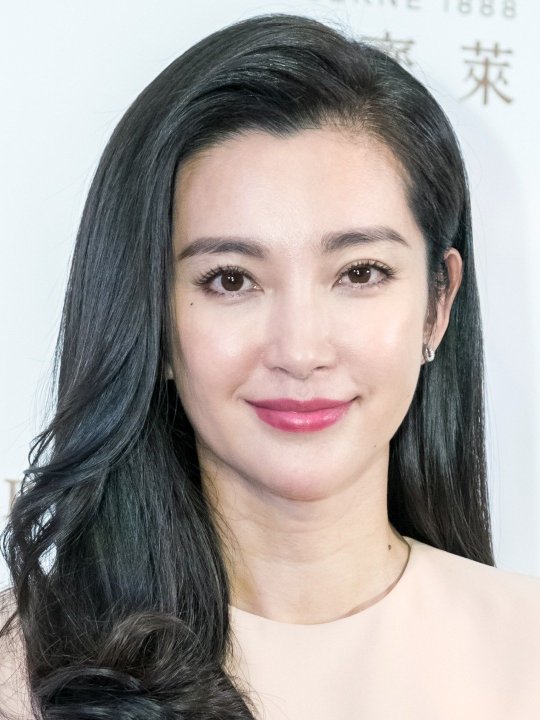



3 notes
·
View notes
Text
May 2022: #LoveAAPI Movies Too
May is Asian-American & Pacific Islander Heritage Month, and we're celebrating with a film you can get through us made by folks from every Asian country. Huge thanks to Sophie and Harry for refining this excellent list!
If you'd like more films from each of these countries and/or more info about these movies, subscribe to our Patreon!

Afghanistan: Osama (2003, Drama, PG-13)
Armenia: The Color of Pomegranates (1969, Biographical Drama/Music, Unrated)
Azerbaijan: Burnt by the Sun (1994, Drama/War, R)
Bahrain: The Barrier (1990, Drama, Unrated)
Bangladesh: Sincerely Yours, Dhaka (2018, Anthology/Drama, Unrated)
Bhutan: Travelers and Magicians (2003, Drama/Adventure, Unrated)
Brunei: Yasmine (2014, Teen Drama/Martial Arts, Unrated)
Cambodia: Rice People (1994, Drama, Unrated)
China: The 36th Chamber of Shaolin (1978, Action, R)
Cyprus: Boy on the Bridge (2016, Drama, Unrated)
East Timor: Beatriz’s War (2013, Historical Drama, Unrated)
Georgia: In Bloom (2013, Drama/Coming-Of-Age, Unrated)
India: Lootera (2013, Romance/Drama, Unrated)
Indonesia: Marlina The Murderer in Four Acts (2017, Thriller, Unrated)
Iran: The Wind Will Carry Us (1999, Drama, Unrated)
Iraq: Son of Babylon (2009, Drama, Unrated)
Israel: The Syrian Bride (2004, Drama, Unrated)
Japan: Departures (2008, Drama/Music, PG-13)
Jordan: Theeb (2014, Drama/Historical, Unrated)
Kazakhstan: Kaïrat (1992, Drama, Unrated)
Kuwait: The Message (1976, Drama/Epic, PG)
Kyrgyzstan: The Adopted Son (1998, Drama, Unrated)
Laos: The Long Walk (2019, Drama/Sci-fi, Unrated)
Lebanon: The Insult (2017, Drama, R)
Malaysia: I Don’t Want To Sleep Alone (2006, Drama/Romance, Unrated)
Maldives: Faree (2021, Drama, Unrated)
Mongolia: The Cave of the Yellow Dog (2005, Drama/Family, G)
Myanmar: The Road to Mandalay (2016, Drama/Romance, Unrated)
Nepal: White Sun (2016, Drama/Adventure, Unrated)
North Korea: The Other Side of the Mountain (2012, War Drama/Romance, Unrated)
Oman: The Dawn (Al-Boom) (2006, Drama, Unrated)
Pakistan: Moor (2015, Drama, Unrated)
Palestine: Chronicle of a Disappearance (1996, Drama/Experimental, Unrated)
The Philippines: Barber’s Tales (2013, Historical Drama, Unrated)
Qatar: Clockwise (2010, Adventure/Drama, Unrated)
Russia: Dersu Uzala (1975, Adventure/Drama, G)
Saudi Arabia: Wadjda (2012, Drama/Coming-Of-Age, PG)
Singapore: Shirkers (2018, Documentary, Unrated)
South Korea: The Host (2006, Horror/Drama, R)
Sri Lanka: Death on a Full Moon Day (1997, Drama, Unrated)
Syria: For Sama (2019, Documentary, Unrated)
Taiwan: A Brighter Summer Day (1991, Drama/Romance, Unrated)
Tajikistan: Luna Papa (1999, Comedy/Drama, Unrated)
Thailand: Cemetery of Splendor (2015, Drama/Fantasy, Unrated)
Turkey: Mustang (2015, Drama, PG-13)
Turkmenistan: The Daughter-in-Law (1972, Drama, Unrated)
United Arab Emirates: 10 Days Before the Wedding (2018, Drama/Romance, Unrated)
Uzbekistan: 2000 Songs of Farida (2020, Drama, Unrated)
Vietnam: Goodbye Mother (2019, Romance/Drama, Unrated)
Yemen: 10 Days Before the Wedding (2018, Drama, Unrated)
#asian cinema#watchlist#movie night#movie marathon#physical media#japanese cinema#chinese cinema#martial arts movies#drama film#comedy film#korean film#mongolia#filipino film#thai film#bollywood
3 notes
·
View notes
Text
Coming Attractions March 2024

As usual, we present monthly previews of new movies being released. These are the movies that will be hitting your local cinemas (and streaming services) this month:
March 1st
Dune: Part Two - Return to Arrakis with director Denis Villeneuve for this adaptation of the second half of Frank Herbert’s Dune.
Spaceman - Adam Sandler is the titular astronaut on a mission to the edge of the solar system in this Netflix drama.
March 8th
Ricky Stanicky (March 7th) - Zac Efron and John Cena star in this comedy from director Peter Farrelly for Amazon Prime Video.
Kung Fu Panda 4 - Po the giant panda is back in the fourth installment of this martial arts animated series.
Damsel - Mille Bobby Brown is a damsel who can save herself in this dark fantasy coming to Netflix.
Imaginary - Think imaginary friends are harmless? Well, this supernatural horror film from the director of Truth or Dare will make you think otherwise.
March 15th
Arthur the King - Do you like movies about dogs? Well if so, then Mark Wahlberg's newest film is for you!
Irish Wish - Lindsay Lohan stars in this fantasy romantic comedy for Netflix about a maid of honor who wishes to trade places with the bride at a wedding in - you guessed it by the title - Ireland.
The American Society of Magical Negros - Justise Smith and David Alan Grier star in this satirical comedy that premiered at Sundance earlier this month to not-so-good reviews.
March 22nd
Road House (March 21st) - Doug Liman directs Jake Gyllenhaal in this reimaging of the 1989 film starring Patrick Swayze. Look for Road House on Amazon Prime Video this month.
Ghostbusters: Frozen Empire - Time to suit up, it is ghost-busting time for the Ghostbusters in this direct sequel to 2021's Ghostbusters: Afterlife.
Shirley - Regina King is Shirley Chisholm in this biographical film from writer/director John Ridley that details Chisholm's historic campaign for President in 1972.
March 29th
Godzilla x Kong: The New Empire - Two best friends, Godzilla and King Kong, are back in action in this follow-up to 2021's Godzilla vs. Kong.
Now for a quick look ahead to February my top picks for next month are Civil War, Abigail, Challengers, and The Ministry of Ungentlemanly Warfare.
-MB-
0 notes
Text
A Review of John Woo’s ‘Mission: Impossible II’ (2000)

Released in the year 2000, Mission: Impossible II revolves around IMF agent Ethan Hunt, portrayed by Tom Cruise, and his mission to put an end to the former IMF agent Sean Ambrose’s plan to use the dangerous virus Chimera and its cure, Bellerophon, for a global catastrophe. Played by Dougray Scott, Ambrose has stolen the virus, and with the help of Nyah Hall, a professional thief played by Thandie Newton and Ambrose’s former girlfriend, Hunt infiltrates Ambrose’s organization to stop him. Directed by John Woo, the movie showcases several action scenes, fighting sequences featuring martial arts, and explosive stunts. This movie is the second Mission: Impossible franchise installment.
It is strange for me to see a martial arts movie get blended in with a Mission: Impossible film, but that is what we have here. A few scenes made me think I was viewing a kung fu movie from the 1960s instead of a Tom Cruise action flick. Some of the fight scenes are built and executed with martial arts techniques. One scene shows Cruise moving around slowly as a dove flies around him. It is a motif from the director’s career. Nonetheless, it seems unusual for what I would expect from this franchise.
As previously mentioned, John Woo piloted this film. He is an acclaimed movie director, particularly in action and crime stories. His signature style includes elements such as “bullet ballet,” slow-motion, the use of doves, and themes of loyalty, honor, and redemption. He began his career in Hong Kong, directing some of the most iconic films of the 1980s and 1990s, including A Better Tomorrow, The Killer, Hard Boiled, and Bullet in the Head. He later moved to Hollywood and directed blockbuster hits such as Face/Off, Mission: Impossible II, and Windtalkers. He has also worked in other countries, including China, Japan, and France, and has explored a variety of genres, including historical epics, martial arts, sci-fi, and comedy. In addition to his directing work, he is a prolific producer and writer and has created comic series and video games based on his films.
Two of the most influential writers in science fiction television, Brannon Braga and Ronald D. Moore, are credited with assembling the story outline for this movie. Their work has significantly impacted iconic Star Trek shows such as The Next Generation, Deep Space Nine, Voyager, and other sci-fi and fantasy shows like Battlestar Galactica and Outlander. Their writing style is known for its intricate plots, moral dilemmas, character-driven stories, and a balance of action and drama. They have explored themes such as religion, politics, identity, and the nature of humanity. In this retrospective of their careers, we will delve into their accomplishments, obstacles, and legacy in the science fiction genre.
Following Braga and Moore’s story outline, Robert Towne wrote the screenplay for Mission: Impossible II. He returns to the role after working on the first movie four years prior. He is considered one of the most influential screenwriters of the 1970s, a decade that produced some of the most memorable films in American cinema. His work includes movie classics such as Chinatown, The Last Detail, Shampoo, and The Parallax View. Towne’s scripts are known for their sharp dialogue, complex characters, and realistic settings. He has also directed several films, including Personal Best, Tequila Sunrise, and Without Limits.
youtube
#action#adventure#Anthony Hopkins#Brannon Braga#John Woo#Movie#Review#Robert Towne#Ronald D. Moore#Thandie Newton#thriller#Tom Cruise#movies#movie review#Youtube
0 notes
Photo

Mortal Kombat (1995)
#mortal kombat#90's#90s#1995#shang tsung#kano#goro#action movies#American fantasy martial arts action film#Cary-Hiroyuki Tagawa#Trevor Goddard as Kano#reptile
38 notes
·
View notes
Text
MEET THE COSTUME DESIGNER BEHIND THE FANTASTICAL LIVE-ACTION ‘AVATAR: THE LAST AIRBENDER’
Farnaz Khaki-Sadigh is a builder of worlds as much as she submerges herself in the woven fabrics that contrive some of television’s most quirky characters and unusual universes. Known for her past costume design work in Prime Video’s Upload (2020), Khaki-Sadigh can make detached, dystopian realities appear real.
Most recently, the Vancouver-based costume designer built the lushly decorated universe of Netflix’s live-action take on Avatar: The Last Airbender, diving deep into 19th Century lore across Asian history to reference the four different elemental tribes' wardrobe. Seen mostly in the water tribe protagonists Sokka (Ian Ousley) and Katara (Kiawentiio Tarbell), their multi-shade blue protective attire was crafted to appear authentic and feel functional. Each Avatarperformer has their fair share of scenes that include choreographed wire-work and martial art action stunt sequences. Before filming in 2021, the cast participated in a week-long “bending camp” where they trained and strictly reviewed their character’s bending movements and scene choreography in Vancouver, Canada.
“I really wanted to be a warrior and tough kid like Sokka when I was a little guy,” says Ian Ousley about playing Sokka over Zoom. “He masks his vulnerabilities with humor and he tries to protect the people around him.” This courageous and comical character is often draped in protective teal-strapped clothing equipped with a wide warrior waist belt, boomerang, and Indigenous designs—he can’t bend, unlike novice water-bender Katara.
“When I was growing up watching Avatar, what stuck out to me was to be able to see myself in a character on TV and especially as a little Native girl, you know, that representation wasn’t as prevalent. [Katara] is like kicking ass and she is the coolest person,” Kiawentiio Tarbell recalls to me, beaming from Netflix’s Los Angeles headquarters.
The new Avatar iteration accentuates Asian culture not only through onscreen characters, casting, and cuisine but also through the garb that the principal cast and background extras wear. Khaki-Sadigh gave these characters life, even though the characters are set in a fantasy world that defies physics, the interwoven fabric of Asian American identity lives within the seams in every scene. Here, she discusses her costume design mastery work and how being a fan of the show helped her approach design with care and a critical eye.
Malik Peay: As a costume designer, you really are the first line of defense of making these characters feel real and familiar to the Avatar: The Last Airbender franchise that has existed in other iterations before now. What felt like the biggest challenge when creating a wardrobe for all Four Elements?
Farnaz Khaki-Sadigh: When it came to designing for the live-action Avatar: The Last Airbender and creating the looks for the four nations represented by the elements, the biggest challenge was blending the cultural and historical accuracy while staying true to the original animation. The animation pulled so much inspiration from so many different cultures, and I really wanted to represent and showcase the cultural authenticity and historical accuracy of the real nations, cultures and regions that were the inspirations behind the Four Elements. It was important to me to make sure that i blended the two worlds, the real and the animation, in a way that honored both and stayed true to the fanbase. As a costume designer, our job is to be able to help tell the a story by helping visually build the characters and bring their world and personalities to life. It is important to help create a world that the viewers can fully immerse in and relate to. In this case it was really about making sure that everything was still relatable to the fans and did justice to the original show and still was respectful culturally and historically accurate.
MP: I felt the Indigenous influences in the water tribe’s costumes and throughout the other tribes. What was your research process like for this series?
FKS: The original animation takes inspiration from many different cultures during mid- to late 19th Century. I had to not only educate myself about the specific cultures that are referenced by the original lore but also the history of those cultures and the influences their history had on what, how, and why people wore what they wore in those time periods. I spent a lot of time doing research for this project before I started on the show and continuously trying to learn as we worked through the project. I was reading books, articles, watching documentaries and reading historical papers and basically any medium I could use to learn from. I was also very fortunate to speak with some Inuit elders and learn from them first-hand about their culture and history. As well as getting to work with many incredible Inuit artists that contributed to creating some of the trims, accessories, headdresses that were used in both the southern and northern water tribe. This was an incredible collaboration and an amazing learning experience for me.
MP: When it comes to creating a fantasy world for the audience to believe through costuming, what is your main goal in terms of enforcing believability through wardrobe?
FKS: I feel the more the character and the costume and the surrounding world blend in together, the more relatable and believable it is, especially in a fantasy world. Costumes are usually the silent storytellers, you want them to be noticed but you don’t want them to stand out and overpower the scene. They need to seamlessly blend in with the character and the background, to create authenticity to the world and the story they are a part of. The more organic and authentic they feel to the story the more they enforce the believability of the fantasy world you are trying to portray.
MP: Knowing the cast has to have a lot of room for movement in their costumes, how were you sourcing fabric materials for the performers’ wardrobe that would feel functional and practical?
FKS: This was a very important part of the process for us as there are lots of action sequences in the show, and for the most part the cast has the same look. Not only did we have to look at the comfort, flexibility, weight, and mobility for action sequences, but also making sure that the garments flowed and moved organically with the actions. We tested a lot of fabrics, did a lot of mock ups that we tested with cast and stunt actors to ensure that the costume did not infringe on their performance and actions. Changing some of the designs around to make sure we accommodated for the movement and comfort. There is a lot of trial and error to the process. I believe that when you put a costume on a performer it should be comfortable enough that it becomes a part of them, it should be something they put on and not have to fuss with or feel cumbersome by it. The costumes should feel like a second skin and an extension of that character.
MP: Do you look for practicality when curating the cast’s costumes or more so rely on movie magic?
FKS: I think you need both. Practicality is important, but so is authenticity and that takes movie magic. You need both and you need to know how to perfectly blend the two as to not take away from the visual appeal and the viewer experience. For me it has never been one for the other to be honest. It is a balancing act and you have to figure out when to use one or the other and when you need both as things go along.
MP: The fire, air, earth, and water nation costumes are enhanced by the mixed martial arts acts and occasional moments of projectile natural elements. What costume in this series felt like your magnum opus because they all immersed me into the world of Avatar?
FKS: I would have to say the entire show would be my magnum opus. I have been a big fan of the original show, I wanted to work on this project since they announced it, and to have gotten the opportunity to design and create the costumes for the live action and bring the world of Avatar to life is truly a dream come true. This show has been the biggest project, the biggest challenge, and the most gratifying project I have had the honor of designing in my career thus far. I set out wanting to do the show justice, and I am really proud of what me and my team were able to achieve.
MP: Why do you believe the costumes in this series are so integral to each’s character’s background?
FKS: We use clothing to portray many silent messages in daily life. We tell our mood, where we come from, where we are going, and how we feel. We use clothing as a mask to hide our true self, a shield to protect and hide behind or as a badge of honor to show who we are. Just like real life, the costumes on each character tell a bit of their story and their journey, where they come from, where they belong, where they are going, if they are hiding behind a mask or who they truly are and what they may be holding on to. As each character’s journey progresses and their story arch changes, their costumes tell a bit of that journey. Their costumes are a representation of themselves, their nation and their growth as they move along their story arch.
#interview#joysauce#natla#atla#farnaz khaki sadigh#kiawentiio#ian ousley#netflix avatar#avatar the last airbender#avatar netflix#netflix atla#atla netflix
3 notes
·
View notes
Text
Mortal kombat 9 fatalities xbox 360


This concept takes heavy inspiration from Tekken. DC Universe dropped multiple fighting styles for most characters in favor of giving each character a wider variety of special moves 2011's Mortal Kombat returned to a single 2D fighting plane, although characters are rendered in 3D unlike previous MK games, each of the controller's four attack buttons corresponds to one of the character's limbs, the buttons thus becoming front punch, back punch, front kick and back kick ("front" indicates the limb that is closer to the opponent, and "back" indicates the limb that is farther away from the opponent). For Armageddon, fighting styles were reduced to a maximum of two per character (generally one hand-to-hand combat style and one weapon style) due to the sheer number of playable characters. Goro's fighting styles, for example, are designed to take advantage of the fact that he has four arms. While most of the styles used in the series are based on real martial arts, some are entirely fictitious. From Deadly Alliance to Mortal Kombat: Deception, characters had three fighting styles per character: two unarmed styles, and one weapon style. Was the first Mortal Kombat game in which the characters could move in three dimensions, and Mortal Kombat 4 was the first to use 3D computer graphics. Through the 1990s, the developer and publisher Midway Games kept their single-styled fighting moves with four attack buttons for a different array of punches, kicks and blocks. Characters in the early Mortal Kombat games play virtually identically to one another, with the only major differences being their special moves. The arcade cabinet versions of the first two used a joystick and five buttons: high punch, low punch, high kick, low kick, and block Mortal Kombat 3 and its updates added a sixth "run" button. The original three games and their updates, Mortal Kombat (1992), Mortal Kombat II (1993), Mortal Kombat 3 (1995), Ultimate Mortal Kombat 3 (1995), and Mortal Kombat Trilogy (1996), were 2D fighting games. Mortal Kombat II arcade cabinet's control board
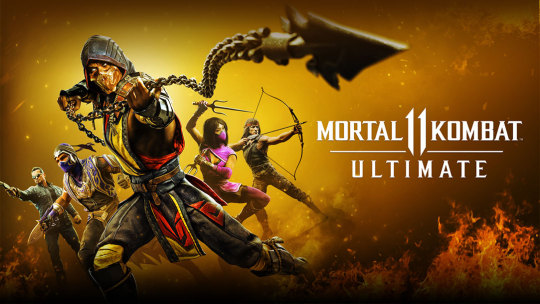
Entertainment and reestablished as NetherRealm Studios. Following Midway's bankruptcy, the MK development team was acquired by Warner Bros. Early games in this series were also noted for their realistic digitized sprites and an extensive use of palette swapping to create new characters. Controversies surrounding Mortal Kombat, in part, led to the creation of the Entertainment Software Rating Board video game rating system. The series has a reputation for high levels of graphic violence, including, most notably, its Fatalities which are finishing moves that kill. Mortal Kombat has become the best-selling fighting game franchise worldwide and one of the highest-grossing media franchises of all time. Kasanoff also produced the second movie, animated TV series, live-action TV series movies, the first one million platinum-selling album and a live-action tour. Movie producer Larry Kasanoff licensed the rights to the game in the early 1990s and produced the first movie of the franchise. The original game has spawned many sequels and spin-offs consisting of several action-adventure games, as well as a comic book series and a card game. The original Mortal Kombat was the first fighting game to introduce a secret fighter, reached if the player fulfilled a set of requirements.

Still the developers paid homage to him with Johnny Cage, a fictional film star whose personal style resembles Van Damme's. The development of the first game was originally based on an idea that Ed Boon and John Tobias had of making a video game starring Jean-Claude Van Damme, but as that idea fell through, a science fantasy-themed fighting game was created instead. Mortal Kombat is an American media franchise centered on a series of video games, originally developed by Midway Games in 1992.

1 note
·
View note
Text
Facade coin flip

FACADE COIN FLIP MOVIE
FACADE COIN FLIP FULL
In the course of the opening, he sets off a collapse, a careering and huge boulder he must outrun, before being double crossed by his local guide afterward. Raiders of the Lost Ark perfectly introduces us to our intrepid archaeologist/adventurer as he retrieves a lost artefact from a boobytrap laden tomb. The ultimate action adventure film has to have a great opening sequence right? Well yes.
FACADE COIN FLIP FULL
Heat, full of great dialogue, beautiful photography and gripping encounters, never lets up, punctuated by exceptional and exquisitely executed set pieces. Then comes the introduction of Vincent Hanna, the flipside to Neil’s (De Niro) coin. We now see the dynamic of how De Niro operates and soon after it establishes Waingro as a loose end. Now it’s a murder charge and consequently in a planned contingency, the other guards are killed. It’s violent and authoritative as they disarm and disorientate the guards, but they’ll live… that is until a spanner in the works, Waingro (Kevin Gage), a new recruit with an itchy trigger finger, shoots down a guard. It’s quick, brutal and they’re running on a schedule down to the second. A well orchestrated hit on a transport vehicle sees Robert De Niro and his band of criminal cohorts strike with ruthless efficiency. Michael Mann’s classic crime thriller starts as it means to go on, and that’s with a visceral, hard hitting and terse sequence which is gritty and precise. At which point we’ve already done period epic, horror and now martial arts are thrown in, as Dacascos shows off his physical prowess whilst rain torrential pours down. They run into bandits dressed as women who are tormenting a farmer and his daughter. It’s brutal and effective, before transitioning right into the introduction of Gregoire De Fronsac (Samuel Le Bihan) and his trusted Native American aide Mani (Mark Dacascos). The first scene is a Jaws-esque sequence where a peasant is stalked and killed by an unseen creature. Within the opening 10 minutes he’s set the tone perfectly, as an aging Lord in a France under revolution, recounts the Beast of Gevauden, a creature which killed peasants in the French Countryside, and the Naturalist sent (by order of the King) to investigate. It was a genre mash up that was part period epic, part horror, martial arts action film and fantasy. Brotherhood of the WolfĬhristophe Gans announced himself around the world with his mega hit, Brotherhood of the Wolf. That the rest of the film, nay trilogy, couldn’t live up to the opening scene, is not a surprise. It’s a majestic scene only dated by some of the CGI, but it shows the brilliant mix of fierce martial arts and Blade’s arsenal of weaponry that drive the film from then on. Blood rains from sprinklers and the whole place is filled with the undead…then Snipes arrives as Blade and opens up a hefty can of whoop-ass. The opening vampire club sequence in particular is a brilliant way to open, as Traci Lords takes an unsuspecting human (see lamb to slaughter) to an underground rave where he’ll end up a main course. The dark, brooding comic book film from Stephen Norrington had a stoic Wesley Snipes in good form and Stephen Dorff enjoying himself as the villain, Deacon Frost. Ahead of its time, stylistically very of its time, but also distinctly flawed, Blade was almost the orchestrator of its own demise. The film that really blazed a trail for the MCU, was Blade back in 1998.
FACADE COIN FLIP MOVIE
Here are fifteen of the greatest movie openings… Blade Others might open somewhat meekly but improve as the film goes on (but at the risk of having lost viewers before the going gets good). Some films open brilliantly and can’t maintain it. Some films will opt for intrigue and a slow burn, but there needs to be enough to stop a viewer from potential peering down to their phone. In the age of streaming and a lust for instant gratification, where Tik Tok videos all of 20 seconds occasionally fail to keep attention till the end, it’s essential to open strongly. A film’s goal is to grab the attention of viewers and hold them until the final credits roll. Tom Jolliffe looks at 15 great movie openings which hook the audience immediately…Īudiences are a difficult bunch to please sometimes.

0 notes
Text
Never back down

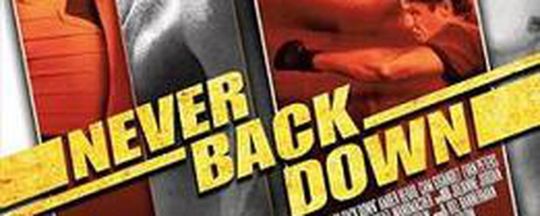
While Sony Pictures Home Entertainment are releasing the film on home video, they didn’t go for the Blu-ray format here. This is a bare bones release all the way. And the fact that White himself is a total package of on screen charisma, incredible martial arts talent, and a competent and capable director and writer, make him an indispensable presence in the modern action movie landscape. This kind of talent and ethic should be rewarded on any budget scale. What White is able to do is take all those limits and restrictions into account and then cast them aside and make the best and most entertaining movie possible with the resources he has. But if you’re a fan of fight films and low budget action movies, these are elements you’ve learned to live with and may even have come to expect. There’s some janky editing going on here, plenty of flat performances, and lots of the shortcomings that mini-budget films frequently suffer from. This is a hard working Hollywood talent whose budgets may be low, but who gives this film everything he’s got and succeeds on every level. The fact that White himself has proven to be much like his on screen character is equally potent. When living by his code backs Walker into a corner, watching him fight his way out provides an enormously satisfying conclusion. Helping train James for a title fight with Caesar Braga (fight film giant Nathan Jones aka Mad Max: Fury Road’s Rictus Erectus) brings them around the globe to Thailand, which adds a production value to the film and also likely helped keep the budget low as well. A good and loyal friend to his co-lead Brody James (Josh Barnett), a famous fighter who is in the Rocky IV excess stage of his fighting career, Case brings the discipline and loyalty James desperately needs. Walker is the kind of hero Bruce Lee would have been proud to see on screen. He’s the archetypal wandering hero brought to life by a proudly Black man, which is not something to take lightly in today’s cinematic landscape where talent of color work so hard to get the roles they so rightly deserve and which so often go to white males.
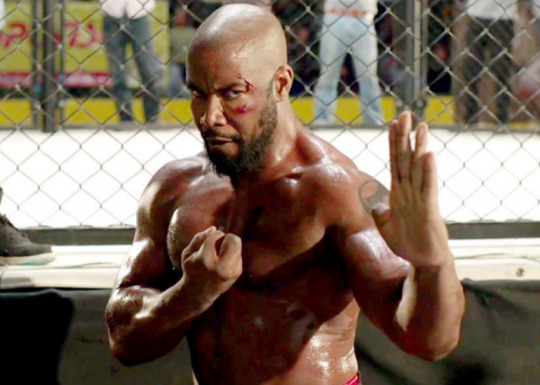
While I’m at it, I’d just like to add that it’s wonderful to see an onscreen hero like Case Walker, an African American man who is the best at what he does, who teaches others, who is humble and honest. The film follows all the conventions of a typical fight film, but those very elements become convention because of how satisfying they can be when done right. A cinematic fantasy that is equal parts wholesome and brutal, captured on a minimal budget, but with the eye of a talented fight choreographer and cinematographer. By abandoning a lot of the structure of the previous films and simply tacking on the Never Back Down franchise name, White is given an opportunity to display some of the themes and philosophies that really make him tick as a person. That may sound like hyperbole when talking about a DTV martial arts film, but I’m prone to shining a light on this underappreciated niche of cinema. As writer/director/star/unbelievable physical specimen, Michael Jai White further cements his bona fides and really treads a path very few get to walk. With Never Back Down 3, White not only returns to the director’s chair, but also serves as a writer alongside Chris Hauty, who also penned the previous two. There also seems to have been an adherence to the structure of the original film which held it back quite a bit. I don’t remember a lot of the specifics of that film, but the addition of real world MMA fighters to the cast was probably the sales pitch for the film, and it hamstrung the acting. He’s a noble warrior type who trains and coaches another cast beefy whiper snappers to victory. Miyagi, and the legal troubles are not his fault. Even so, his Case Walker character took a bit of a backseat as a trainer with a troubled legal history. With the second film, White took over directing duties and starred in the film. The mall metal accompanying the trailer kind of says it all.

Sold as an EXTREME version of The Karate Kid set in some kind of high school underground MMA ring, Djimon Honsou and Amber Heard support a cast of douchey looking white kids duking it out. White’s presence was my inroad to the franchise, and based on the trailer for the first film I stand by my disinterest in it. Never Back Down: No Surrender: Never Stop Never Stoppingīut in all seriousness, I love Michael Jai White and this third entry in the redundantly titled fight film franchise is the best that I’ve seen (meaning the better of the two White entries).

0 notes